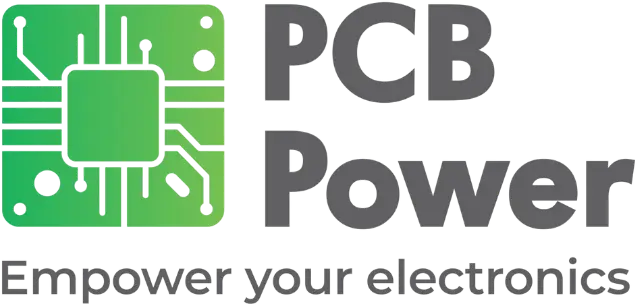
The Role of Alternate Parts in Component Sourcing – When and How to Use Them
Anyone who’s worked in electronics long enough knows that sourcing components can be as unpredictable as the weather. One moment, you're on track, your Bill of Materials is solid, and suppliers are aligned. Then suddenly, lead times skyrocket, parts vanish from the market, and you're forced to ask: Do we have alternates for this?
Alternate parts aren’t just backup options. They’re strategic tools in a designer’s toolbox, helping projects stay on course when original components are unavailable, overpriced, or obsolete. In today’s unpredictable supply chain climate, knowing when and how to use alternate parts is not just smart; it’s essential.
What Exactly Are Alternate Parts?
Think of alternate parts as vetted substitutes. They're components that can take the place of another in your design without compromising functionality. Not all alternates are created equal, though. Some are exact matches in form, fit, and function. Others are similar enough to work with a few layout or tolerance tweaks.
In practice, alternates are often categorized as:
- Drop-in replacements (no changes needed)
- Parametric equivalents (minor tweaks required)
- Functional substitutes (more significant changes or re-validation needed)
Used wisely, they can save weeks of delay and prevent a manufacturing standstill.
Why Alternate Parts Are More Relevant Than Ever
In today’s market, relying solely on your first-choice components is risky. Let’s explore why alternate parts have become a non-negotiable part of modern sourcing strategy.
1. Supply Chains Are Still Unstable
Global component sourcing hasn’t fully recovered post-pandemic. Sudden shortages, geopolitical disruptions, and raw material issues continue to impact availability. And startups? They often get the short end of the stick when high-volume buyers corner the supply.
That’s where alternate parts help. If a crucial IC is backordered for 24 weeks, a vetted equivalent could keep production on schedule.
2. Price Sensitivity Is a Real Concern
A part that cost 80 cents a year ago might be pushing $3 today. For companies manufacturing at scale, those cost differences stack up fast. Alternates offer a way to cut costs without compromising quality, assuming they’re carefully chosen and validated.
3. Dealing with Discontinued Parts
Some components disappear without notice. One day, they’re active on the distributor site; the next day, you’re met with an “End of Life” notice. Alternate sourcing gives teams breathing room, especially for long-life products where redesigns are expensive.
When Should You Start Looking for Alternates?
Ideally? Before you even need them.
Alternate part planning should begin during your initial design and BOM creation. Waiting until you’re halfway through production is a recipe for stress and last-minute scrambles.
Be proactive when:
- You’re working with single-source parts
- Lead times start creeping up
- Your customer demands long-term availability
- You’re revisiting a legacy design for re-manufacturing
Even in high-mix, low-volume environments, it pays to have at least one backup listed for high-risk parts.
How to Approve and Use Alternate Parts
It’s not just about finding a part that "sort of" works. You need a process. Precision. Patience.
Step 1: Cross-Reference Properly
Use manufacturer databases, part libraries, and trusted sources.
Step 2: Validate Electrically and Mechanically
Will this part survive the same voltage range? Will it mount the same way on your PCB? What's thermal behavior like?
Step 3: Prototype with the Alternate
Before switching to production, build a few prototypes using the alternate. Run all standard tests. Catch issues now, not later.
Step 4: Update Your BOM
Document everything. Make sure your internal systems reflect approved substitutes.
Conclusion
Sourcing alternates isn’t just a sourcing issue; it’s a design and manufacturing issue, too. That’s why PCB Power works closely with engineers and procurement teams during every -stage.
As a PCB manufacturer in India, with years of experience in printed circuit boards, we offer not just assembly but full BOM validation and support. We’ll flag high-risk components, suggest viable alternates, and help test substitutes before they go live on the line.
Check out our BOM verification tool – PowerBoM. Designed to streamline your component sourcing by instantly validating part numbers and ensuring smooth PCB manufacturing services.
FAQs
1. What’s the first step when choosing an alternate part?
Start by comparing electrical specs and pin configurations. Make sure the substitute meets or exceeds your original requirements.
2. Are alternates usually cheaper than original components?
Sometimes. But the goal isn't always saving money, it’s about availability and continuity.
3. Can I use alternates without informing my manufacturer?
You shouldn't. Even small changes can affect soldering, layout, or thermal behavior. Always loop in your PCB partner.
4. How do I know if an alternate part is certified?
Check for compliance certifications like RoHS, REACH, or UL. Your supplier should provide documentation.
5. Does PCB Power help with alternate part approval?
Yes, we assist in sourcing, testing, and validating alternate components to ensure they meet your design specs.
6. What if my alternate part affects the board layout?
If a footprint change is required, we can help update your design and re-spin the board for seamless PCB board fabrication.



